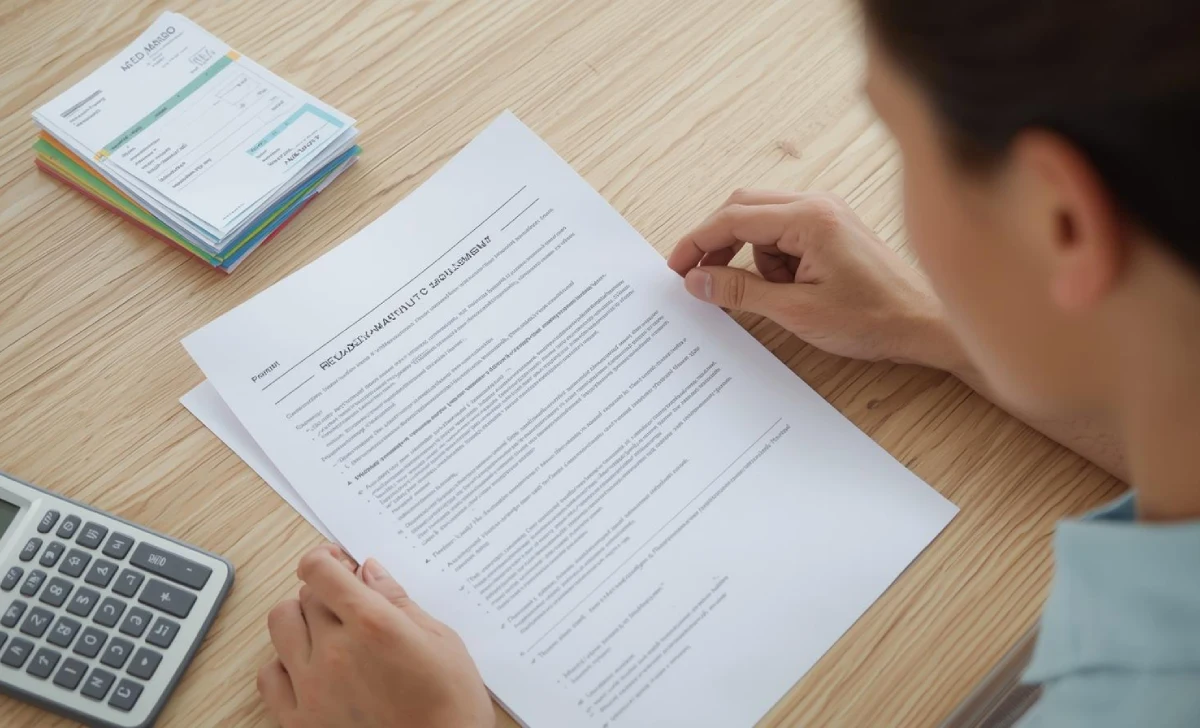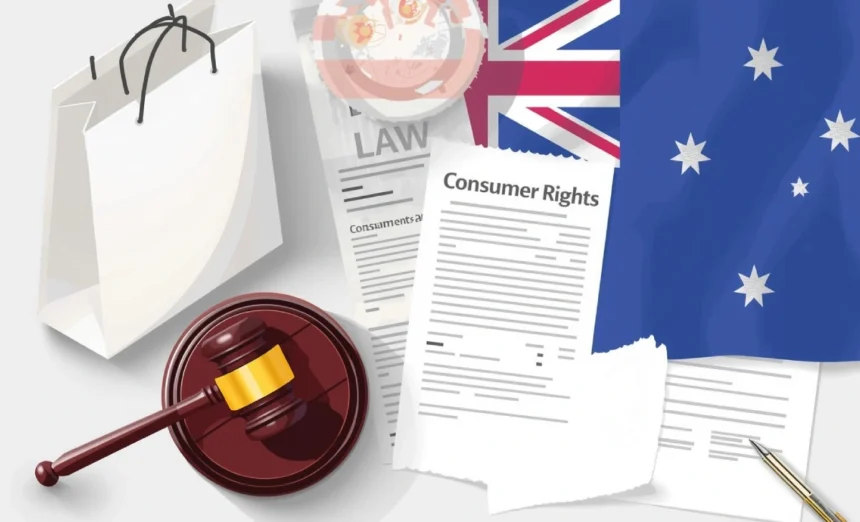Many Australians don’t realise the full extent of their rights under the Australian Consumer Law (ACL). Whether you’re dealing with a faulty fridge, a broken laptop, or a service that didn’t deliver, knowing your rights can save you stress and money.
- What is the Australian Consumer Law (ACL)?
- Your consumer guarantees explained
- Refunds, repairs & replacements under ACL
- Warranties and extended warranties
- How to claim a refund or repair step-by-step
- Step 1: Gather your evidence
- Step 2: Approach the business first
- Step 3: Escalate to consumer protection bodies
- Sample complaint templates
- Common ACL myths debunked
- Myth: ‘No refund’ signs are legally binding
- Myth: You must accept store credit instead of refunds
- Myth: Warranties replace your ACL rights
- Where to get help if your rights are denied
- Australian Competition and Consumer Commission (ACCC)
- State and territory consumer agencies
- Tribunals and specialist ombudsmen
- Conclusion
- FAQs
- How long do I have to return faulty goods under ACL?
- Can I get a refund if I simply changed my mind?
- Do I need the original receipt to claim under ACL?
- What if I bought something on sale — do I still have the same rights?
- Can online purchases be returned under ACL?
- What’s the difference between a manufacturer’s warranty and consumer guarantees?
- Do I have to pay for return shipping for faulty items?
- Can I demand a cash refund instead of store credit?
- What if the business has closed down?
- How much does it cost to take a case to tribunal?
From misleading warranty claims to dodgy refund policies, consumers face these challenges daily. The good news? The ACL provides robust protection that often overrides what businesses tell you about their “no refund” policies.
This comprehensive guide explains Australian consumer law in simple terms — including your guaranteed rights, the refund process, and step-by-step complaint procedures that actually work.
What is the Australian Consumer Law (ACL)?
The Australian Consumer Law forms Schedule 2 of the Competition and Consumer Act 2010 and represents the most significant consumer protection framework in Australian history. Introduced on 1 January 2011, the ACL replaced a patchwork of state and territory laws with a unified national system.
The basics of ACL
The ACL is enforced by the Australian Competition and Consumer Commission (ACCC) at the federal level, alongside state and territory consumer affairs agencies. This dual enforcement approach means you have multiple avenues for support when businesses breach your rights.
The law covers all Australian businesses selling goods or services to consumers, with penalties reaching up to $50 million for corporations that engage in misleading conduct or breach consumer guarantees.
Why ACL matters for consumers and businesses
Every day, the ACCC receives over 200 consumer complaints, with common issues including faulty products, misleading advertising, and businesses refusing legitimate refund requests. The ACL exists to level the playing field between consumers and businesses.
A prime example of ACL’s impact occurred in 2017 when the ACCC took Apple to court for misleading consumers about their warranty rights. Apple had to pay $9 million in penalties and provide additional remedies worth $4 million to affected customers who were wrongly charged for repairs covered under consumer guarantees.

Your consumer guarantees explained
Consumer guarantees are automatic rights that apply to every purchase of goods and services in Australia. Unlike warranties, these guarantees can’t be excluded by businesses and apply regardless of what a store’s refund policy states.
Consumer guarantees for goods
When you buy goods in Australia, they must:
• Be of acceptable quality — free from defects, safe, durable, and match what a reasonable consumer would expect
• Be fit for purpose — suitable for the use you told the seller about
• Match descriptions — conform to any sample shown or description provided
• Have a clear title — the seller must have the right to sell the goods
• Come with undisturbed possession — you have the right to use the goods without interference
The “acceptable quality” guarantee is particularly powerful. It considers factors like appearance, safety, durability, and freedom from defects. A $2,000 washing machine that breaks after six months would likely fail this test.
Consumer guarantees for services
Services purchased in Australia must be:
• Provided with due care and skill — using appropriate expertise and competence
• Fit for the intended purpose — suitable for the specific use you communicated
• Delivered within a reasonable time — unless a specific timeframe was agreed upon
NSW Fair Trading reported a case where a consumer successfully claimed compensation when a tradesperson took six months to complete a bathroom renovation originally quoted at three weeks, with multiple defects requiring rectification.

Refunds, repairs & replacements under ACL
Understanding when you’re entitled to specific remedies can mean the difference between accepting a store credit and getting your money back. The ACL distinguishes between major and minor problems, with different remedies available for each.
Major vs minor problems
A major problem exists when:
• The goods have a problem that would have stopped a reasonable consumer from buying them
• The goods are significantly different from the description, sample, or demonstration model
• The goods are substantially unfit for their common purpose and can’t easily be fixed within a reasonable time
For major problems, you can choose between a refund, replacement, or repair.
A minor problem can be fixed within a reasonable time and at no cost to you. For minor problems, the business can choose to repair or replace the goods.
When you can demand a refund
You have the right to a refund when:
• There’s a major problem with the goods or service
• The business fails to fix a minor problem within a reasonable time
• You haven’t been able to use the goods for a significant period due to repeated repairs
The landmark ACCC case against Harvey Norman franchisees in 2018 resulted in $2.6 million in penalties for misleading consumers about their refund rights. The court found that telling customers “no refunds on change of mind” was acceptable, but denying refunds for faulty goods violated the ACL.
Warranties and extended warranties
One of the biggest misconceptions Australian consumers hold is that manufacturer warranties replace their ACL rights. This simply isn’t true — consumer guarantees operate alongside and often exceed warranty coverage.
Manufacturer’s warranty vs ACL rights
Your consumer guarantee rights under the ACL:
• Can’t be excluded or limited by any warranty terms
• Apply for a “reasonable time” (often longer than warranty periods)
• Cover problems that develop due to normal wear and tear within a reasonable timeframe
• Don’t require you to return goods to overseas manufacturers
A manufacturer’s warranty is simply an additional promise that works alongside your ACL rights, not instead of them.
Extended warranties: often unnecessary
Extended warranties are frequently pushed by retailers because they’re highly profitable. However, many extended warranties duplicate coverage you already have under the ACL.
The ACCC found that many consumers purchasing extended warranties for appliances and electronics were unaware that their consumer guarantee rights often provided better protection. In 2019, the ACCC secured commitments from major retailers to improve how they sell extended warranties, including better disclosure of consumer guarantee rights.

How to claim a refund or repair step-by-step
When goods or services don’t meet consumer guarantees, follow this systematic approach to maximise your chances of a successful resolution.
Step 1: Gather your evidence
Before contacting the business, compile:
• Proof of purchase — receipt, bank statement, or electronic confirmation
• Documentation of the problem — photos, videos, or written descriptions
• Communication records — emails, text messages, or notes from phone calls
• Expert opinions — if relevant, get written assessments of defects
Digital photos with timestamps can be particularly valuable for proving when problems first appeared.
Step 2: Approach the business first
Contact the business where you made the purchase, not necessarily the manufacturer. Be polite but firm:
• Clearly explain the problem and how it breaches consumer guarantees
• State what remedy you’re seeking (refund, repair, or replacement)
• Reference your rights under Australian Consumer Law
• Set a reasonable deadline for response (typically 7-14 days)
• Keep records of all communications
A Queensland consumer successfully secured a full refund for a $1,200 smartphone after the screen cracked within two weeks. Initial refusal by the retailer was overturned when the consumer escalated through proper channels, citing ACL rights.
Step 3: Escalate to consumer protection bodies
If the business refuses to resolve the issue:
• Contact your state fair trading office — they can mediate disputes and investigate systemic breaches
• Lodge an ACCC complaint — particularly for larger businesses or a pattern of breaches
• Consider tribunal proceedings — NCAT (NSW), VCAT (Victoria), QCAT (Queensland) and equivalents in other states
The key is documenting your reasonable attempts to resolve the matter directly with the business first.
Sample complaint templates
Having the right words can make all the difference when asserting your consumer rights. Here are proven templates that achieve results.
Initial refund request email
Subject: Consumer Guarantee Claim – [Product/Service] – [Your Name]
Dear [Business Name],
I am writing to request a [refund/repair/replacement] for [product/service] purchased on [date] for $[amount].
The [goods/service] fail to meet consumer guarantees under the Australian Consumer Law because [specific problem – e.g., “the washing machine stopped working after two weeks of normal use, indicating it is not of acceptable quality”].
Under the ACL, I am entitled to choose my remedy for major problems. I am requesting a [full refund/replacement] and expect this to be processed within [7-14 days].
I have attached proof of purchase and evidence of the problem. Please contact me by [specific date] to confirm how this will be resolved.
Regards, [Your name and contact details]
Escalation letter template
Subject: Formal Consumer Complaint – ACL Breach – [Reference Number if applicable]
Dear [Business Name],
I am formally notifying you of a breach of consumer guarantees under the Australian Consumer Law following your refusal to provide appropriate remedies for [product/service].
Background:
- Purchase date: [date]
- Problem identified: [date]
- Initial contact with business: [date]
- Business response: [summary]
Legal Position: Your refusal to [provide refund/repair under a reasonable timeframe] constitutes a breach of consumer guarantees under Schedule 2 of the Competition and Consumer Act 2010.
Resolution Sought: I require [specific remedy] within [timeframe] or I will escalate this matter to [relevant state fair trading body] and consider tribunal proceedings.
I reserve all rights under Australian Consumer Law.
Yours faithfully, [Name and contact details]
Common ACL myths debunked
Misinformation about consumer rights allows businesses to deny legitimate claims. Here are the most persistent myths Australian consumers encounter.
Myth: ‘No refund’ signs are legally binding
Reality: Businesses cannot exclude consumer guarantee rights through signs, terms and conditions, or verbal statements. “No refunds” signs may apply to change-of-mind returns, but are meaningless for faulty goods or services that breach ACL guarantees.
The ACCC regularly takes enforcement action against businesses that mislead consumers about their refund rights through inadequate signage.
Myth: You must accept store credit instead of refunds
Reality: For major problems, you choose the remedy — refund, repair, or replacement. Businesses cannot force you to accept store credit unless you agree to it.
Myth: Warranties replace your ACL rights
Reality: Consumer guarantees operate regardless of warranty terms and often provide superior protection. Warranties are additional promises that work alongside, not instead of, your ACL rights.
The ACCC’s 2020 consumer survey found that 40% of Australians incorrectly believed manufacturer warranties were their primary protection, highlighting the need for better consumer education.
Where to get help if your rights are denied
When businesses refuse to honour your consumer guarantee rights, multiple agencies and services can assist you.
Australian Competition and Consumer Commission (ACCC)
The ACCC investigates breaches of Australian Consumer Law and can take enforcement action against businesses. While they don’t resolve individual disputes, they use complaint data to identify systemic problems and prioritise enforcement activities.
Lodge complaints through the ACCC website or by calling 1300 302 502.
State and territory consumer agencies
Each state and territory has a dedicated consumer affairs agency that can:
• Provide information about your rights
• Mediate disputes between consumers and businesses
• Investigate complaints and take enforcement action
• Offer conciliation services
Key agencies:
- NSW Fair Trading: 13 32 20
- Consumer Affairs Victoria: 1300 558 181
- Office of Fair Trading Queensland: 13 QGOV (13 74 68)
- Consumer and Business Services South Australia: 131 882
- Department of Commerce Western Australia: 1300 304 054
Tribunals and specialist ombudsmen
For unresolved disputes, consider:
• Civil and Administrative Tribunals — NCAT (NSW), VCAT (Victoria), QCAT (Queensland) handle consumer disputes up to $40,000-$100,000 depending on jurisdiction
• Industry-specific ombudsmen — Telecommunications Industry Ombudsman, Australian Financial Complaints Authority for specialised sectors
Tribunal proceedings typically cost $50-$200 and don’t require legal representation, making them accessible for most consumer disputes.

Conclusion
Understanding the Australian Consumer Law explained empowers you to stand up for your rights and demand fair treatment from businesses. Whether it’s securing a refund for faulty goods, getting proper repairs within reasonable timeframes, or challenging misleading warranty claims, the ACL provides comprehensive protection that many consumers don’t fully utilise.
The key steps are straightforward: know your consumer guarantee rights, document problems thoroughly, communicate clearly with businesses about ACL requirements, and don’t hesitate to escalate through official channels when businesses refuse to comply.
Remember, consumer guarantees can’t be excluded by business terms and conditions, warranty limitations, or “no refund” signs. Your rights under Australian consumer law are explained automatically and enforceable — agencies like the ACCC and state fair trading offices exist specifically to back you up.
FAQs
How long do I have to return faulty goods under ACL?
There’s no specific time limit in the ACL — goods must be of “acceptable quality” for a “reasonable time.” For a $2,000 refrigerator, reasonable time might be 7-10 years, while for a $50 phone case, it might be 6-12 months. The more you pay and the longer you’d reasonably expect it to last, the longer your rights continue.
Can I get a refund if I simply changed my mind?
No, the ACL doesn’t require businesses to offer change-of-mind refunds. However, many businesses do this as a customer service gesture. Always check the store’s return policy for voluntary returns, but remember this is separate from your consumer guarantee rights for faulty products.
Do I need the original receipt to claim under ACL?
While a receipt makes things easier, it’s not mandatory. You can use credit card statements, bank records, warranty cards, or even witness testimony to prove purchase. Some businesses may try to insist on original receipts, but this isn’t a legal requirement under the ACL.
What if I bought something on sale — do I still have the same rights?
Absolutely. Consumer guarantees apply regardless of whether you paid full price, bought on sale, or used a discount code. A business cannot limit your ACL rights because you purchased an item at a reduced price.
Can online purchases be returned under ACL?
Yes, the same consumer guarantee rules apply to online purchases. However, online retailers often have additional cooling-off periods (usually 10-14 days) under Australian Consumer Law for certain purchases, giving you extra protection beyond standard ACL rights.
What’s the difference between a manufacturer’s warranty and consumer guarantees?
Consumer guarantees are automatic legal rights that can’t be excluded and often last longer than warranties. Manufacturer warranties are additional promises that work alongside your ACL rights. If your warranty expires but the product fails within a “reasonable time,” you may still have rights under consumer guarantees.
Do I have to pay for return shipping for faulty items?
For faulty goods that breach consumer guarantees, the business should cover return shipping costs. You shouldn’t be out of pocket for returning genuinely defective products. However, for change-of-mind returns, businesses can require you to pay return shipping.
Can I demand a cash refund instead of store credit?
For major problems under the ACL, you can choose your remedy — including a cash refund if you paid cash, or a refund to your original payment method. Businesses cannot force you to accept store credit for legitimate consumer guarantee claims.
What if the business has closed down?
If the retailer closes, you may still have rights against the manufacturer for goods, or against the franchisor if it was a franchise. Check if your payment was made by credit card — many card providers offer chargeback protection for defective goods.
How much does it cost to take a case to tribunal?
Tribunal fees vary by state but are generally modest:
- NCAT (NSW): $48 for claims under $10,000
- VCAT (Victoria): $61.60 for claims under $10,000
- QCAT (Queensland): $45.75 for claims under $5,000
These small fees make consumer tribunals accessible for most disputes.
Take action today: Save this guide, bookmark the complaint templates, and share this information with friends and family. When Australian consumers know and exercise their rights, it creates a fairer marketplace for everyone.
Have you successfully used ACL rights to resolve a consumer dispute? Share your experience in the comments below to help other readers navigate similar situations.






